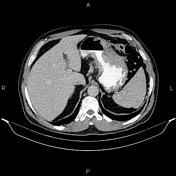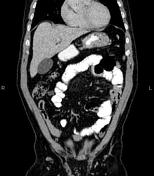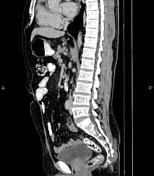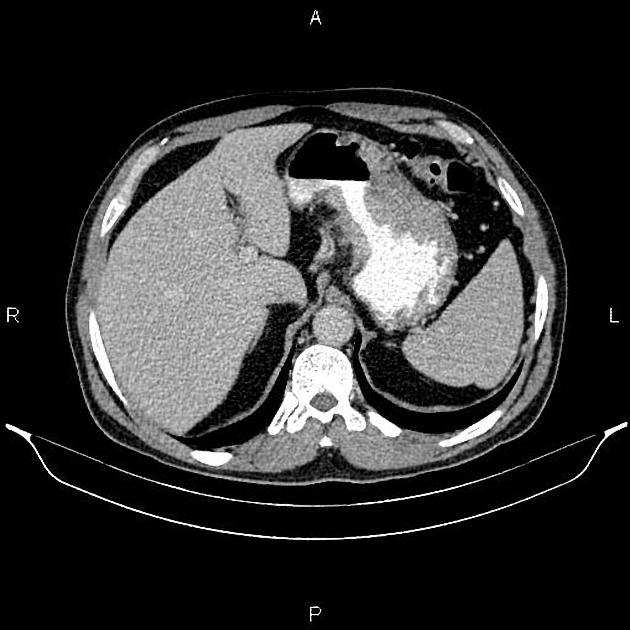Presentation
Abdominal pain and dyspepsia.
Patient Data









Increased wall thickness due to tumoral infiltration is present at the gastric body accompanied by perigastric fat stranding and several regional abnormal lymph nodes with short axis diameter less than 20 mm.
Several non-enhancing simple cortical cysts are seen at both kidneys, with maximum diameters of 55 mm. In addition, a 2 mm stone is present in the middle calyx of the left kidney.
The prostate gland is enlarged.
Degenerative changes of osteophytosis seen involving the lumbar spine.
Case Discussion
Gastric mass; pathology proven adenocarcinoma; with regional lymphadenopathy.
No detectable metastasis.




 Unable to process the form. Check for errors and try again.
Unable to process the form. Check for errors and try again.